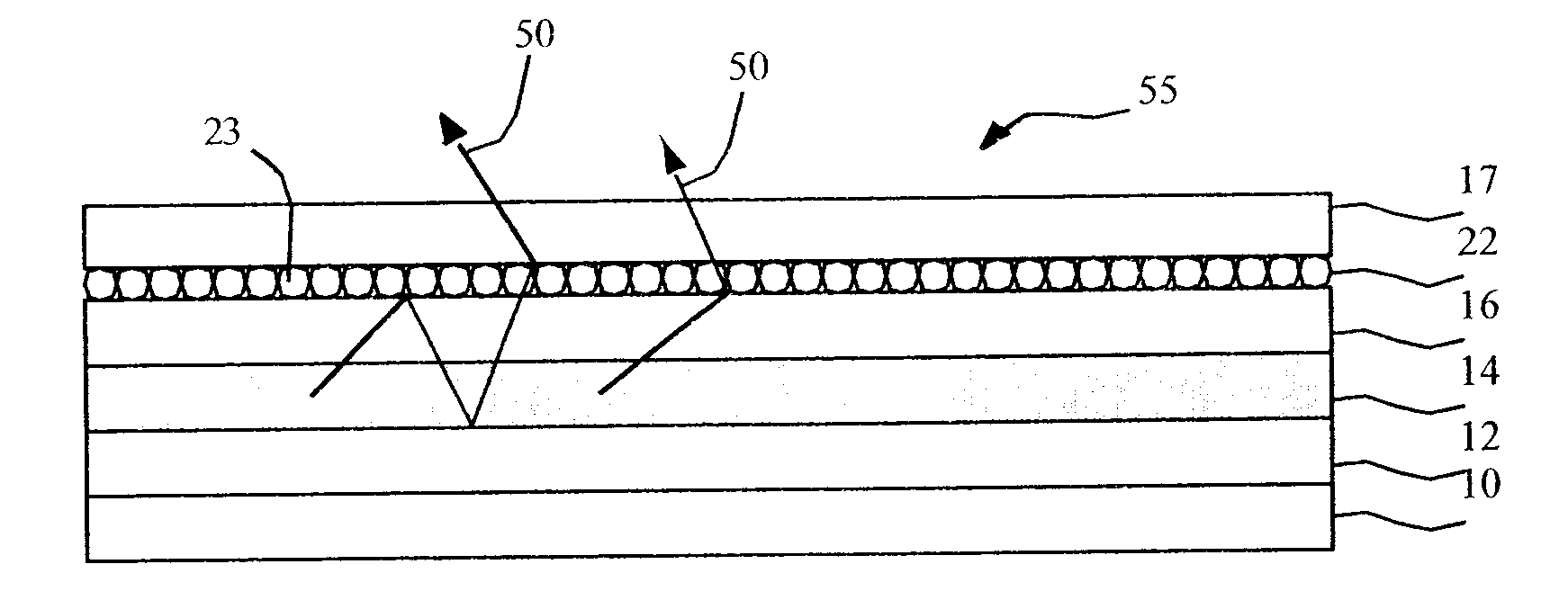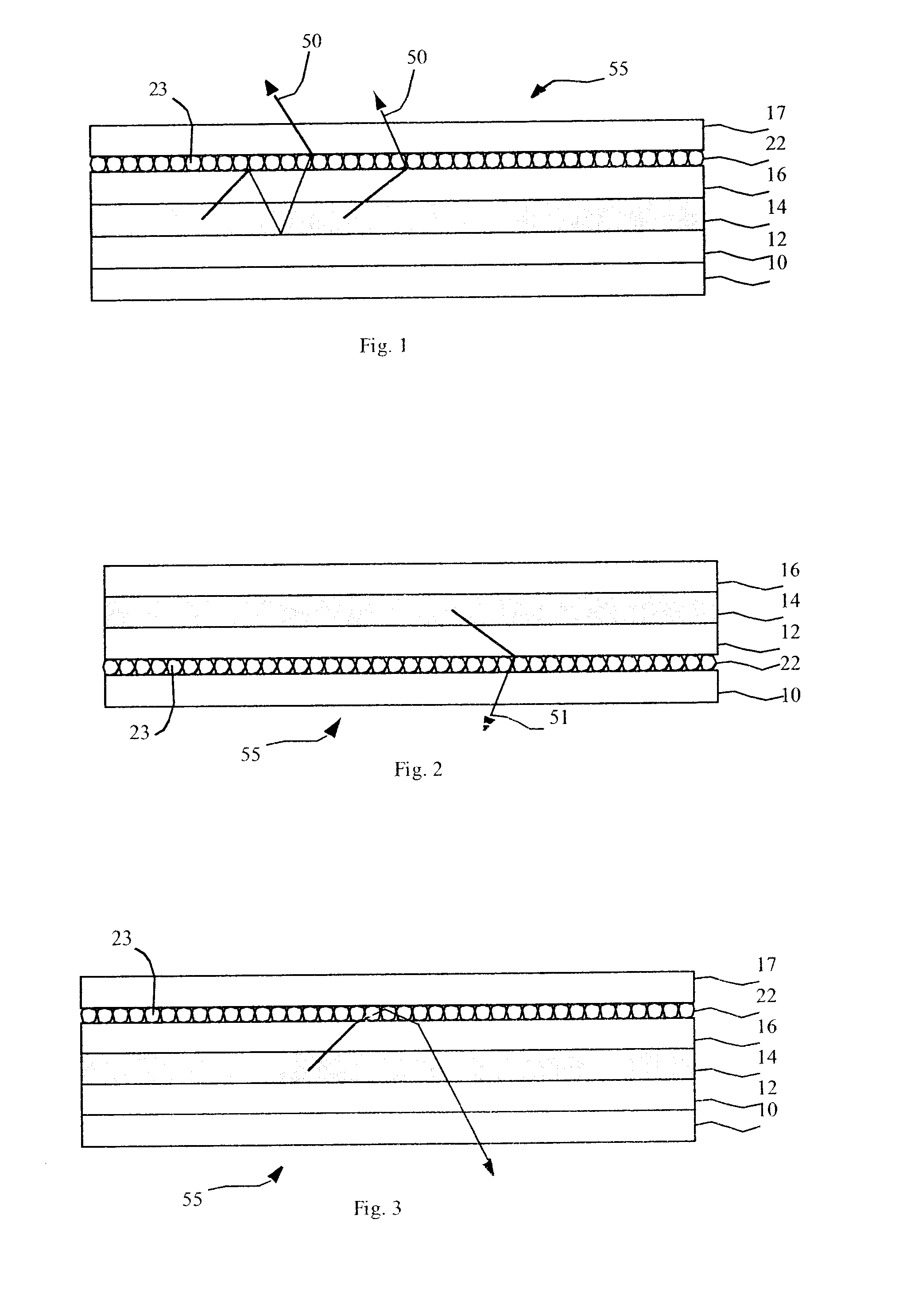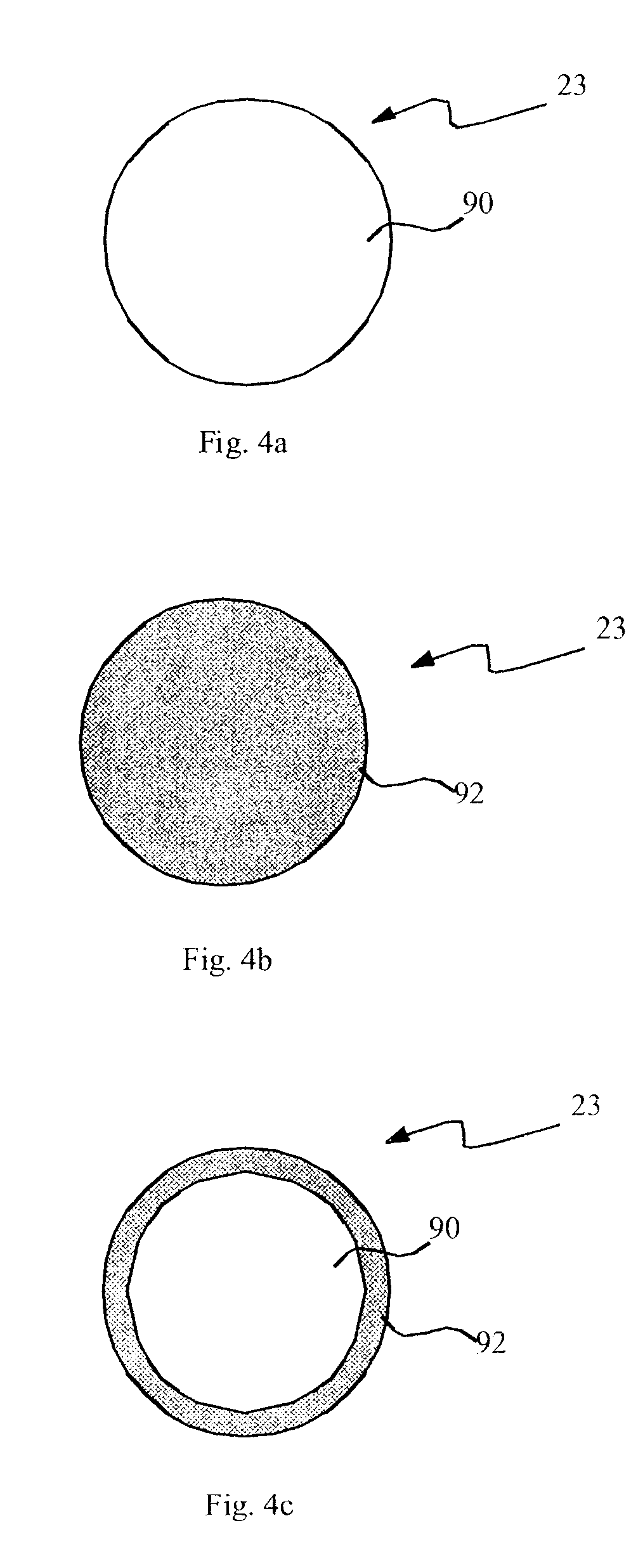LED device having improved light output
a technology of led devices and light output, applied in the direction of discharge tubes/lamp details, organic semiconductor devices, discharge tubes luminescnet screens, etc., can solve the problems of difficult patterned deposition, low light output efficiency, and high cost of metal masks, so as to improve the efficiency of light output and improve the sharpness of pixellated led devices. , the effect of increasing the uniformity of light outpu
- Summary
- Abstract
- Description
- Claims
- Application Information
AI Technical Summary
Benefits of technology
Problems solved by technology
Method used
Image
Examples
Embodiment Construction
[0031]Referring to FIG. 1, in accordance with one embodiment of the present invention, a light-emitting device comprises a substrate 10, a first electrode 12 formed over the substrate 10, a light-emitting layer 14 formed over the first electrode 12, a second electrode 16 formed over the light-emitting layer 14, wherein at least one of the first and second electrodes 12, 16 is transparent; and a light-scattering layer 22 comprising electrically conductive, light-scattering particles 23 in physical and electrical contact with the first or second electrode 12, 16. The light-scattering layer 22 is formed on a side of the first or second electrode 12, 16, and opposite the light-emitting layer 14.
[0032]In various embodiments of the present invention, the light-emitting layer 14 comprises organic materials, for example, those employed in OLED devices. Alternatively inorganic light-emitting particles, for example, core / shell quantum dots in a semiconductor matrix, as taught in co-pending, c...
PUM
 Login to View More
Login to View More Abstract
Description
Claims
Application Information
 Login to View More
Login to View More - R&D
- Intellectual Property
- Life Sciences
- Materials
- Tech Scout
- Unparalleled Data Quality
- Higher Quality Content
- 60% Fewer Hallucinations
Browse by: Latest US Patents, China's latest patents, Technical Efficacy Thesaurus, Application Domain, Technology Topic, Popular Technical Reports.
© 2025 PatSnap. All rights reserved.Legal|Privacy policy|Modern Slavery Act Transparency Statement|Sitemap|About US| Contact US: help@patsnap.com



